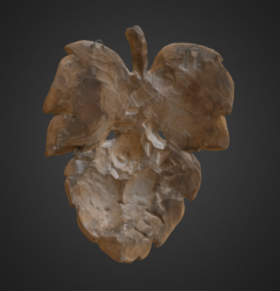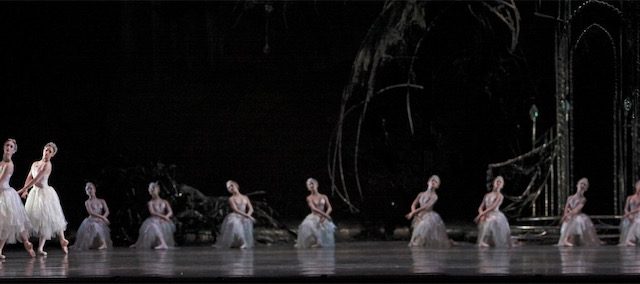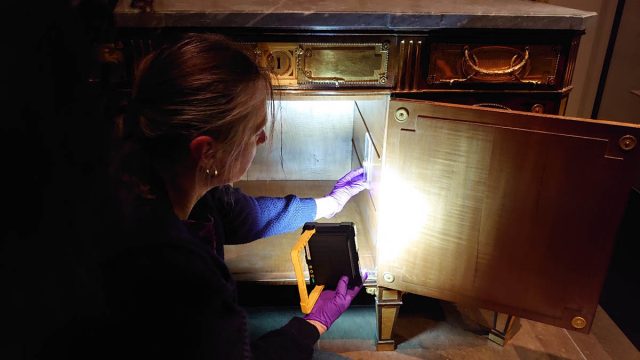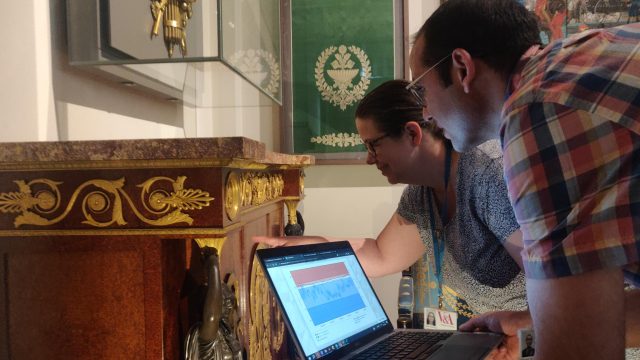I often receive enquiries about the V&A’s plaster cast of Michelangelo’s David (Mus.no. 161-1857), which I have been researching since I cleaned and conserved it between 2013-14. Last year I received an unusual request for a 3D scan of the cast so a 1:1 physical model could be generated and used as a featured prop in a film. Since the V&A David had never been scanned, I asked my colleague at the Pushkin State Museum of Fine Arts in Moscow if she could get hold of a copy of the 2009 scan of their David cast, carried out by what I believe was an external company. However, due to pressures of the film schedule, the hunt to locate a scan was called off and an agreement was made for the company Plowman Craven to digitally map the David cast in the V&A instead.

The scanning proposal came just at the point in time when I was learning about how 3D imaging (in the form of photogrammetry) could be used to view David-related artefacts that were not on display. I had been collaborating with photographer George Eksts from the Word and Image Department and the British Museum to create 3D images of the plaster casts of David’s facial features including his nose, left eye and lips, as well as their corresponding piece moulds at the BM.
While we were working on that project, David’s famous fig leaf was brought in to our studio before going on display in the ‘Undressed’ exhibition so we took the opportunity to create 3D images of the leaf as well.


In 2015 I had been contacted by artist Meriç Algün Ringborg, who needed to create a copy of the leaf for her installation for the 14th Istanbul Biennial. We were unable to take the object out of its display case at that time so instead I searched for images that would show the leaf from different angles and provided information including its measurements. If we’d had a scan or 3D images of the object at that time, both of our jobs would had been much easier.
I was eager to find out if 3D technology would reveal something that hadn’t already been brought to light by my previous methods of investigation (archival research, visual examination, X-ray, paint analysis). The mould for the V&A David was taken directly from the original sculpture in 1847 so it captures the original marble at that time, showing the weathering and cracks on its surface. I was hopeful that the scan would help us to enhance our understanding of the cast and its relation to both the original marble and other similar casts. I was also curious to learn if scanning would give us the exact dimensions of the figure and record any markings on its surface such as raised seam lines left by the casting process that were not visible to the naked eye. The Museum was given a copy of the scan, which I am sure will benefit anyone who is interested in the study of the iconic sculpture. If funding should become available in the future, reworking the scan to meet our requirements would hopefully help us to study the figure in depth from art historical, conservation as well as scientific perspectives.
In the next post, Jonathan Fletcher MRICS, Technical Specialist at Plowman Craven, the UK’s leading specialist chartered surveyors in 3D scanning, will share his thoughts of the day. So stay tuned for Michelangelo’s David – Part 2: By-product of the movie industry allows for historical investigation of David’s cast.



After reading this article i have grip much information and all are valuable.